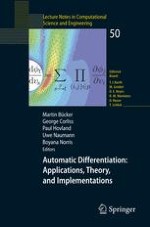2006 | Buch
Automatic Differentiation: Applications, Theory, and Implementations
herausgegeben von: Martin Bücker, George Corliss, Uwe Naumann, Paul Hovland, Boyana Norris
Verlag: Springer Berlin Heidelberg
Buchreihe : Lecture Notes in Computational Science and Engineering
